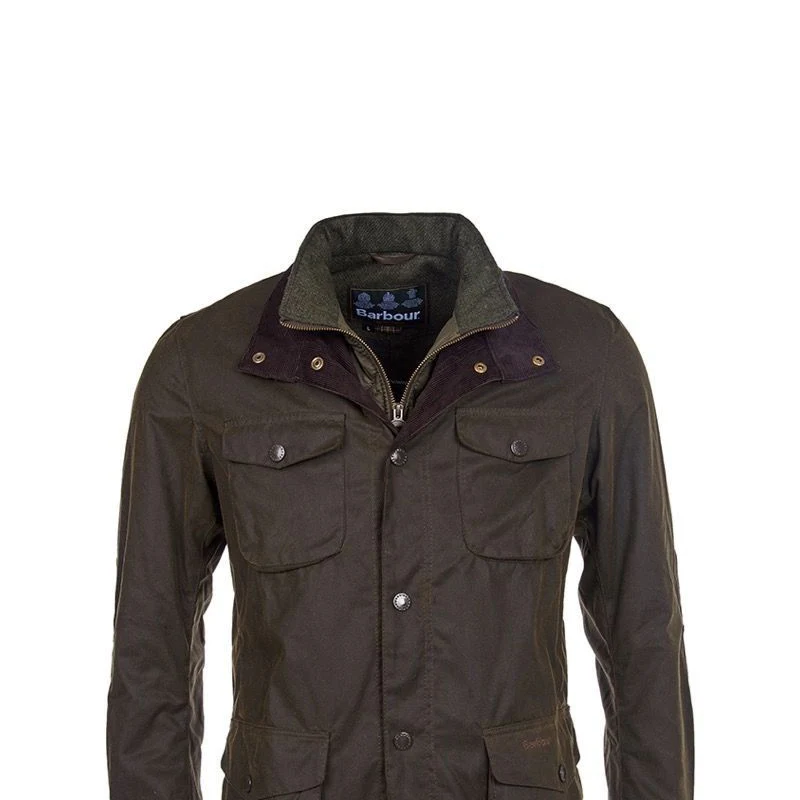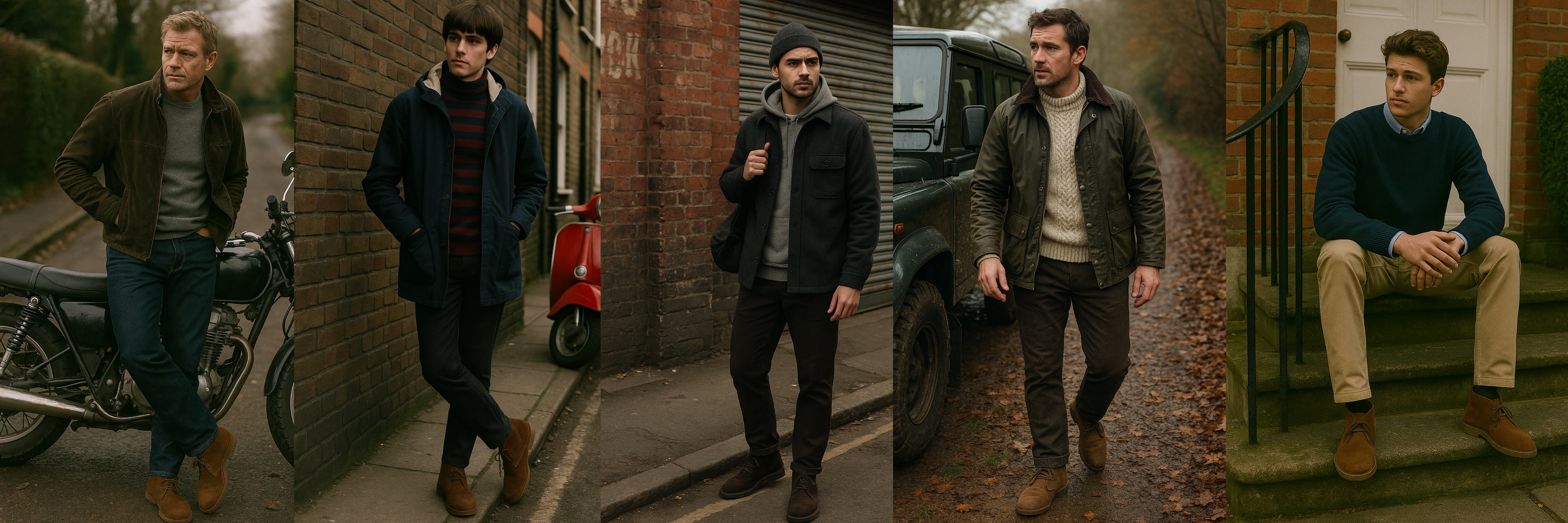
Are Wax Jackets Really Waterproof? Exploring the Truth About Barbour and Other Wax Coats
As the rain pours down and the wind howls outside, the allure of a trusty wax jacket becomes increasingly apparent. These iconic garments, exemplified by the renowned Barbour brand, have long been touted as the epitome of weatherproof outerwear. But are wax jackets truly waterproof, or is there more to their weatherproofing capabilities than meets the eye?
In this comprehensive blog post, we'll delve into the world of wax jackets, exploring their history, the science behind their water-repellent properties, and the factors that can impact their performance. Whether you're an outdoor enthusiast, a fashion-conscious individual, or simply someone seeking reliable protection from the elements, this guide will provide you with the insights you need to make an informed decision about your next wax jacket purchase.
Understanding Wax Jackets
Wax jackets, also known as oilskin or Barbour jackets, have a rich history that can be traced back to the early 19th century. These garments were initially developed for fishermen and sailors who needed durable, water-resistant outerwear to protect them from the harsh maritime conditions.
The key to the wax jacket's weatherproofing lies in the unique wax coating applied to the fabric. This coating, typically made from a blend of waxes and oils, creates a barrier that repels water and provides a degree of wind resistance. The wax coating also helps to reinforce the fabric, making it more durable and resistant to tearing or abrasion.
Barbour, a British company founded in 1894, has become synonymous with wax jackets. Their iconic designs, such as the Bedale and the Beaufort, have become staples in the wardrobes of outdoor enthusiasts, country dwellers, and fashion-forward individuals alike.
Waterproofing Properties of Wax Jackets
Wax jackets are often touted as being waterproof, but the reality is a bit more nuanced. While the wax coating does provide a significant level of water resistance, it is not entirely impervious to water penetration. The degree of waterproofing depends on several factors, including the quality of the wax coating, the age and condition of the jacket, and the wearer's level of activity.
When new or freshly reproofed, a high-quality wax jacket can effectively repel light to moderate rainfall, keeping the wearer dry and comfortable. The wax coating creates a hydrophobic barrier that causes water to bead and roll off the surface of the fabric. However, as the jacket ages and the wax coating wears down, the level of water resistance can diminish.
It's important to note that wax jackets are not the same as waterproof jackets made with modern, synthetic materials like Gore-Tex. While wax jackets offer a good level of water resistance, they are not entirely waterproof and may eventually become saturated in heavy or prolonged rain.
Factors Affecting Waterproofing
The waterproofing capabilities of a wax jacket can be influenced by several factors, including the quality of the wax coating, the maintenance and care of the jacket, and the age and wear of the garment.
Quality of Wax Coating
The quality and composition of the wax coating play a significant role in the jacket's water-repellent properties. Higher-quality wax blends, such as those used by Barbour, tend to provide better water resistance and durability over time. Cheaper or inferior wax coatings may not offer the same level of protection and may break down more quickly.
Jacket Maintenance
Proper maintenance and care are essential for preserving the waterproofing capabilities of a wax jacket. Regular cleaning and reproofing, using specialized wax-based products, can help to renew the wax coating and restore the jacket's water-resistant properties.
Age and Wear
As a wax jacket is worn and exposed to the elements, the wax coating can gradually wear down, reducing its water-repellent abilities. Over time, the jacket may become less effective at keeping the wearer dry, especially in heavy rain or prolonged exposure to moisture.
Limitations of Wax Jackets
While wax jackets are highly effective in many situations, they do have some limitations when it comes to waterproofing. In certain scenarios, water may still be able to penetrate the jacket, compromising its ability to keep the wearer dry.
Water Penetration Scenarios
Factors such as heavy or prolonged rainfall, high-intensity activities that generate a lot of sweat, or areas of the jacket that experience significant abrasion or wear can all contribute to water penetration. In these cases, the wax coating may become saturated, allowing water to seep through the fabric.
Reapplying Wax Coating
To maintain the waterproofing capabilities of a wax jacket, the wax coating will need to be reapplied periodically. This process, known as reproofing, involves applying a specialized wax-based product to the jacket's surface, effectively renewing the water-repellent barrier.
Care and Maintenance Tips
Proper care and maintenance are essential for preserving the waterproofing capabilities of a wax jacket. Here are some tips to help you keep your wax jacket in top condition:
Reproofing Techniques
Regularly reproofing your wax jacket is crucial for maintaining its water-resistant properties. Follow the manufacturer's instructions for the best reproofing methods, which may involve using a wax-based reproofing product or even a wax-based washing machine cycle.
Cleaning Recommendations
When cleaning your wax jacket, avoid using harsh detergents or machine washing, as these can strip the wax coating. Instead, use a mild soap and water solution, and gently scrub the jacket by hand. Allow it to air dry completely before reproofing.
Conclusion
Wax jackets, such as those from the iconic Barbour brand, have long been praised for their weatherproofing capabilities. While these jackets do offer a good level of water resistance, it's important to understand that they are not entirely waterproof. The degree of waterproofing can be influenced by factors like the quality of the wax coating, the age and condition of the jacket, and the wearer's level of activity.
To ensure your wax jacket continues to provide reliable protection from the elements, it's essential to follow proper care and maintenance practices, including regular reproofing and gentle cleaning. With the right approach, your wax jacket can remain a trusty companion for years to come, keeping you dry and comfortable in even the most challenging outdoor conditions.
Whether you're an avid outdoor enthusiast or simply someone who appreciates the timeless style of a wax jacket, understanding the nuances of their waterproofing properties can help you make an informed decision and get the most out of your investment. So, the next time you reach for your wax jacket, you can do so with the confidence that it will keep you protected from the unpredictable weather.


